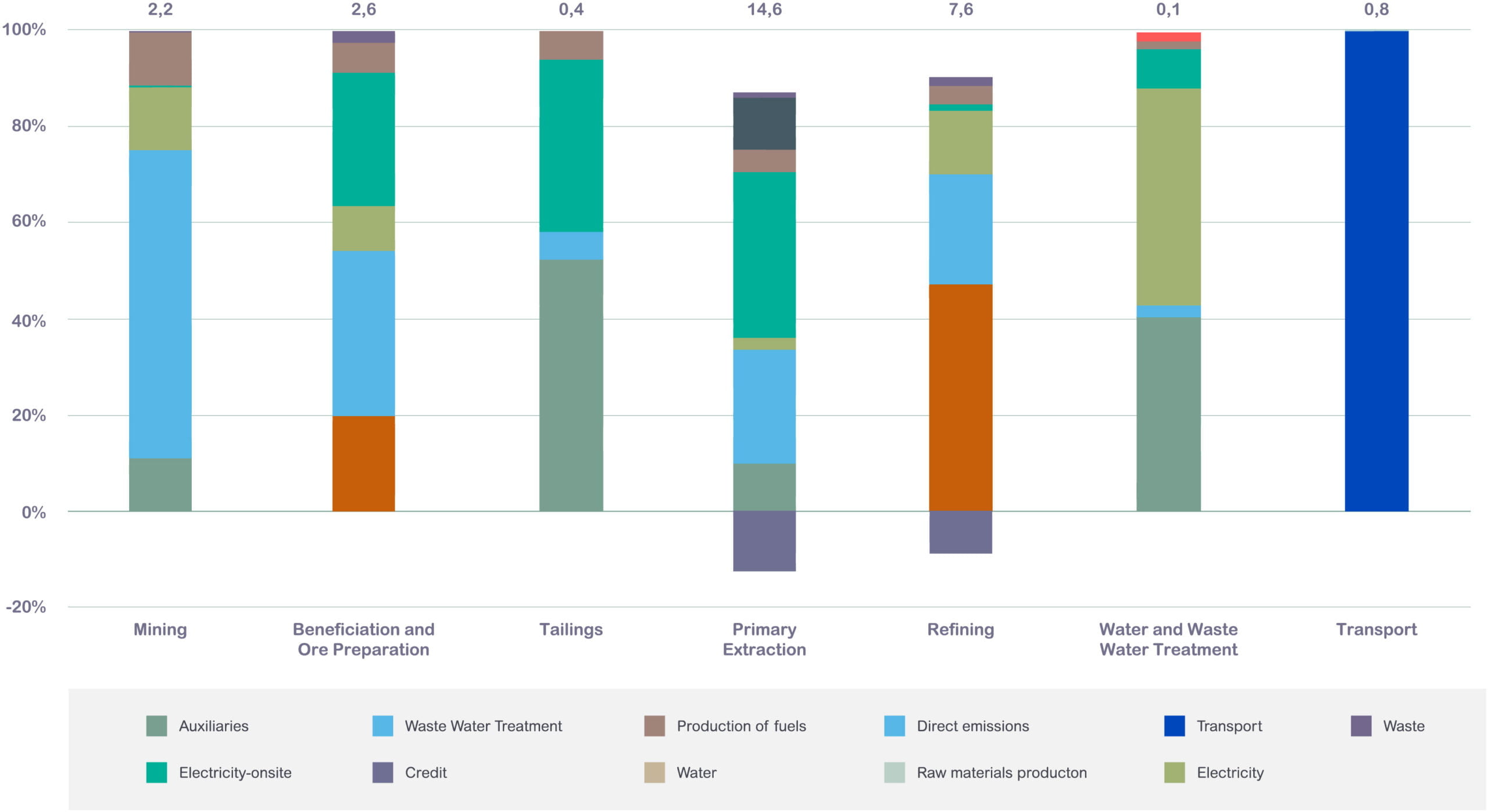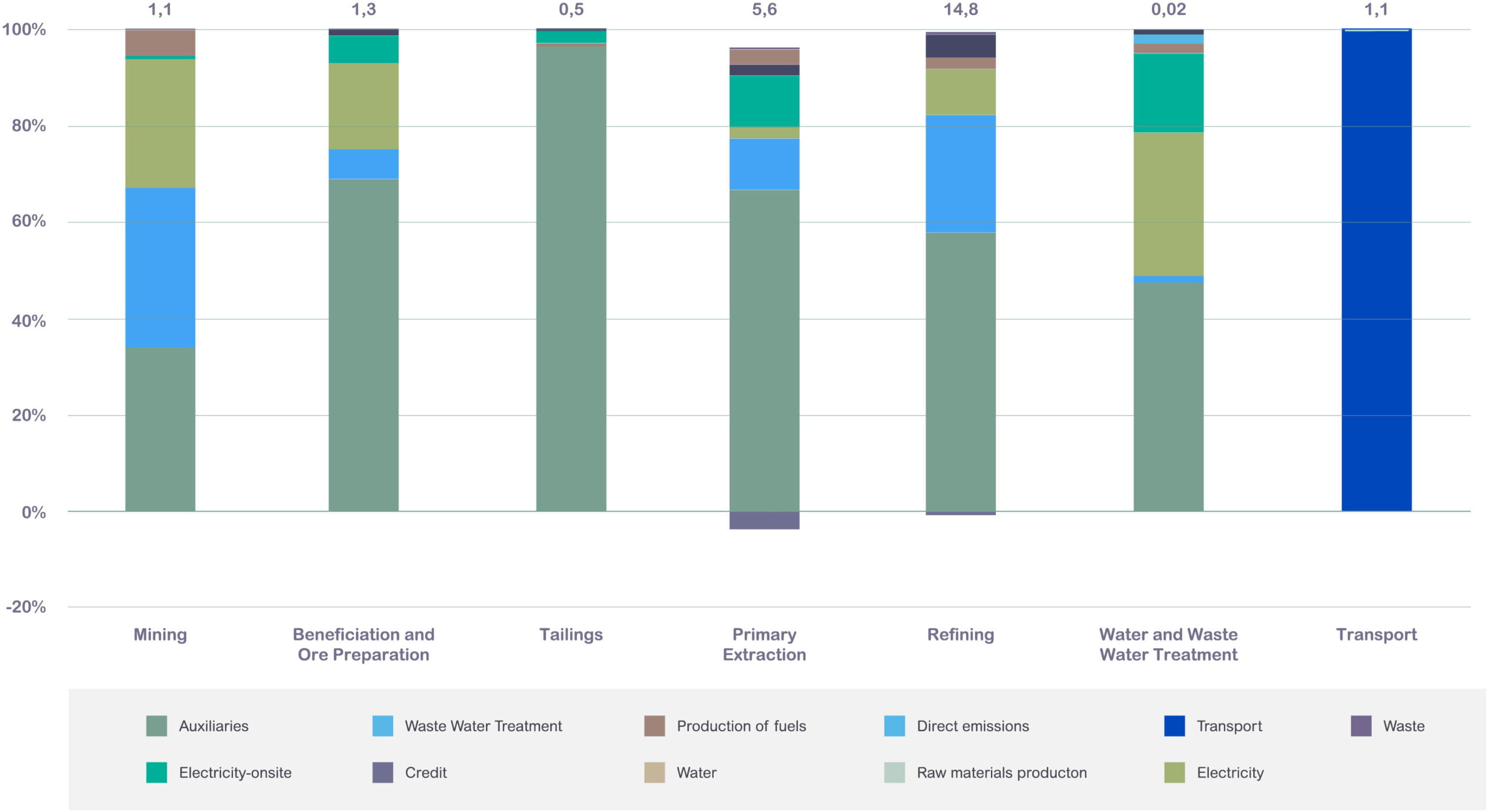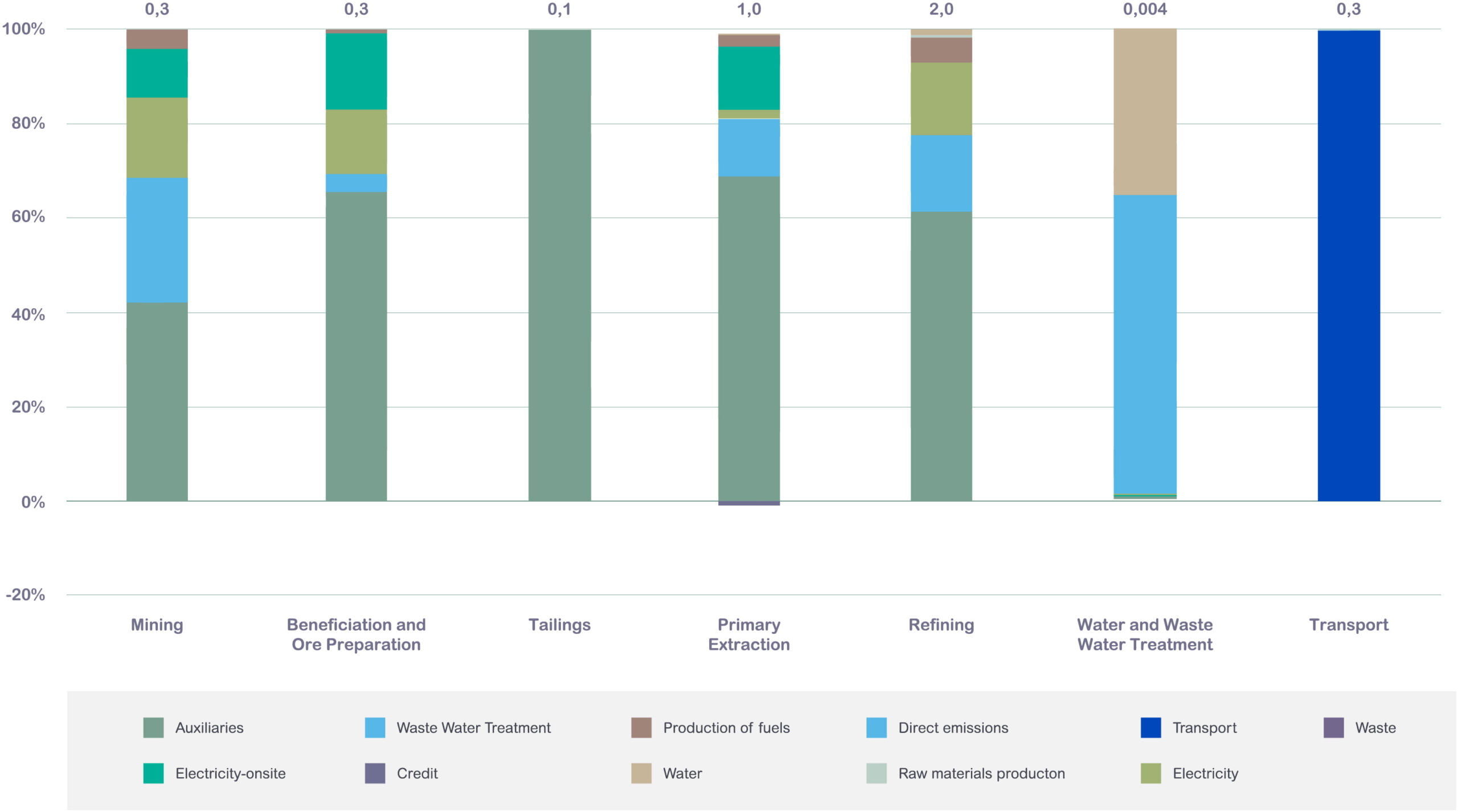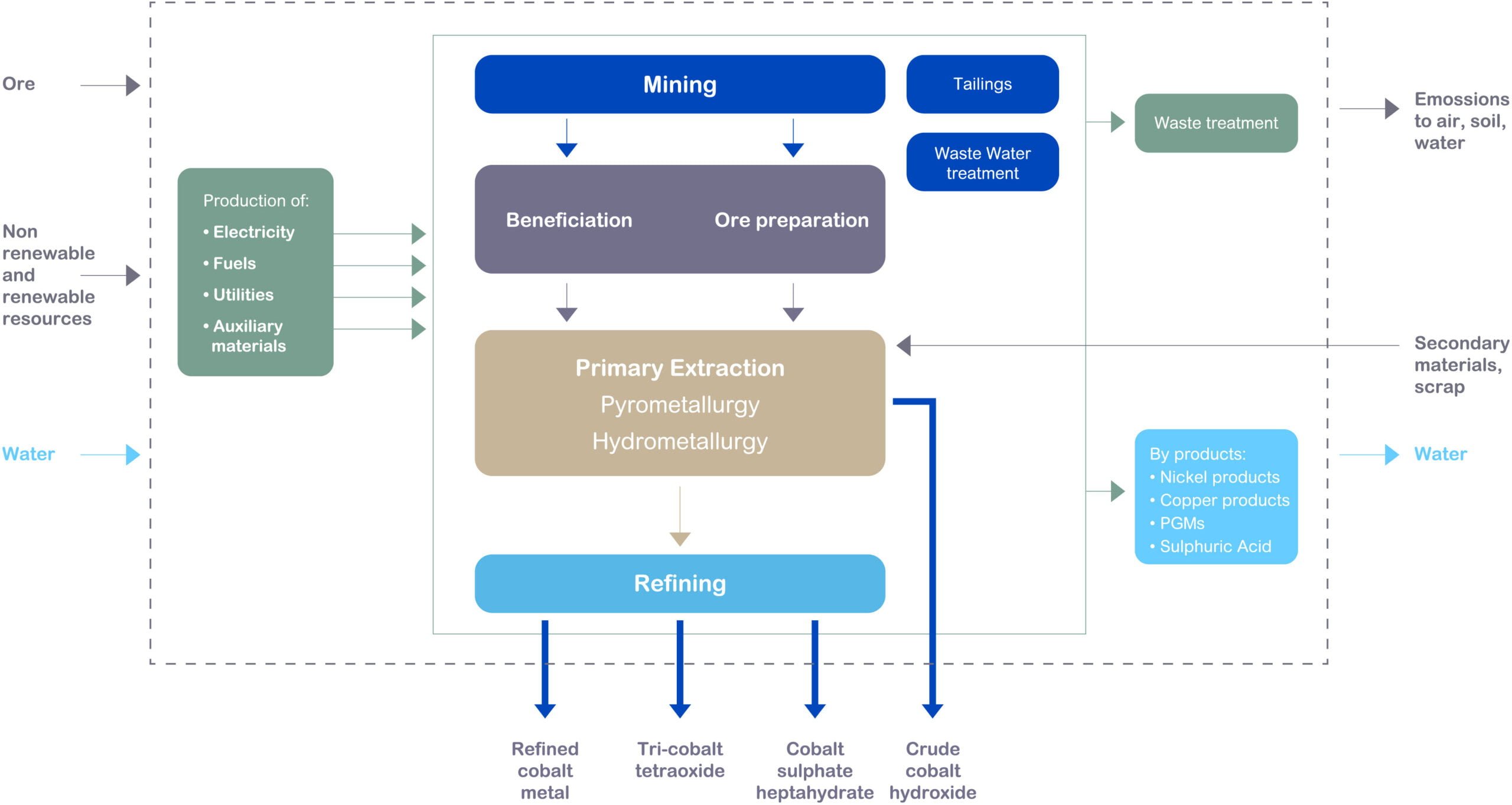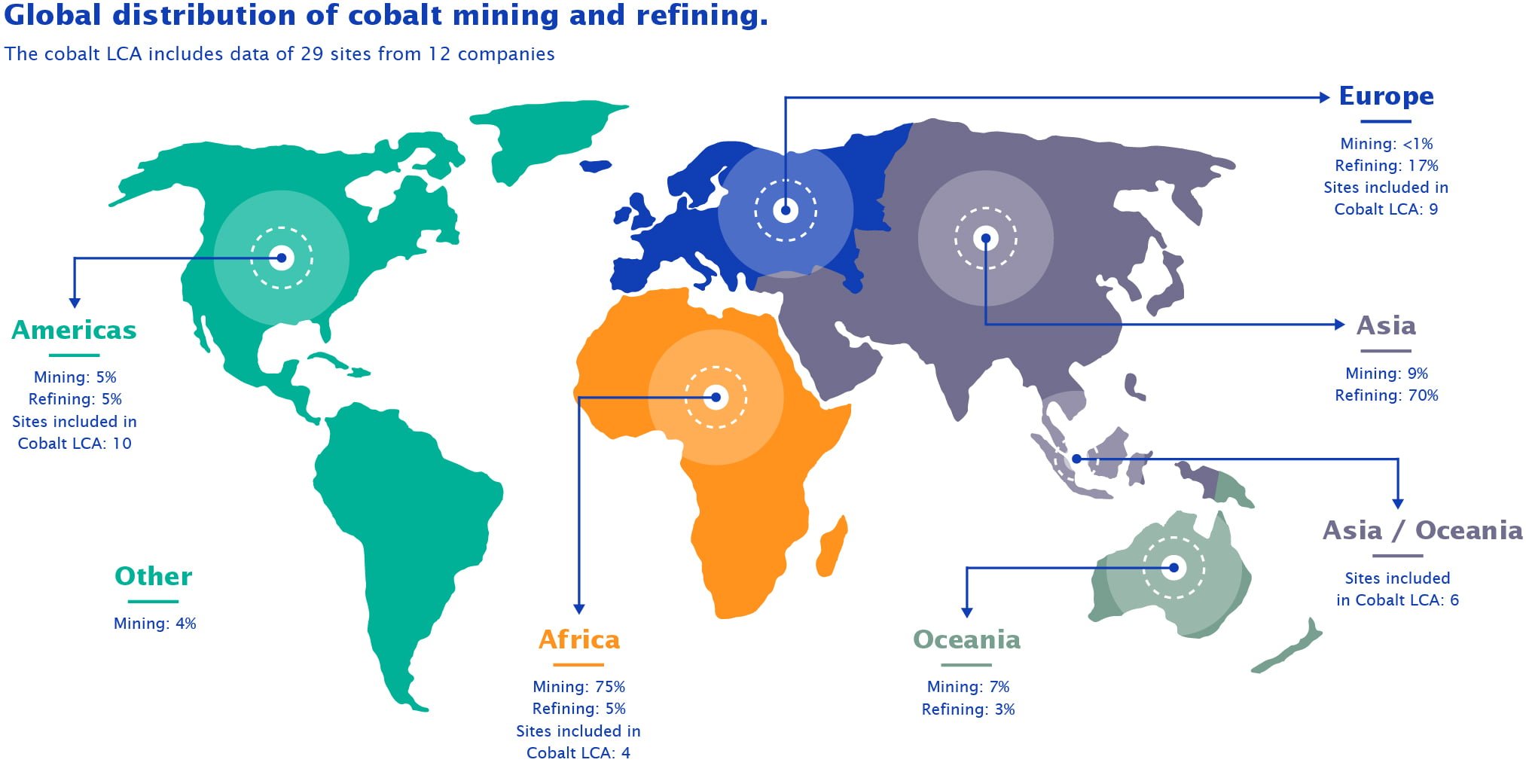Life Cycle Assessment
The Cobalt Institute conducted a Life Cycle Assessment of cobalt and cobalt compounds including cobalt sulphate to inform stakeholders about the potential environment impacts of the production of cobalt.
The study generated industry average cradle-to-gate datasets for refined cobalt metal (an update of the 2015 LCA), crude cobalt hydroxide, and tricobalt tetraoxide and cobalt sulphate heptahydrate – two cobalt compounds used primarily in battery applications – for the reference year 2019. The study followed the industry standard methodology set out in Harmonization of LCA Methodologies for Metals (2014) and was peer reviewed according to relevant ISO standards ISO 14040, ISO 14044, and ISO/TS 14071.
This study is a continuation of the 2015 Cobalt Life Cycle Assessment that focused on cobalt metal only and was the first of its kind in the cobalt sector.
Final results
| Impact category |
1 kg Cobalt Metal Co ~ 99.9% |
1 kg Crude Cobalt Hydroxide Co ~ 31.1% |
1 kg Tri-Cobalt-Tetraoxide Co ~ 73% |
1 kg Cobalt Sulphate Heptahydrate Co ~ 21% |
| Global Warming Potential [kg CO2 eq.] | 28,2 | 6,4 | 24,0 | 4,0 |
| Acidification Potential [kg SO2 eq.] | 0,44 | 0,13 | 0,34 | 0,29 |
| Eutrophication Potential [kg Phosphate eq.] |
0,01 | 0,0022 | 0,005 | 0,004 |
| Photochemical Ozone Creation Potential [kg NMVOC eq.] | 0,11 | 0,03 | 0,12 | 0,03 |
| Other environmental indicators | ||||
| Primary Energy Demand [MJ] | 561 | 179 | 356 | 101 |
| Blue water consumption [kg] | 992 | 863 | 1647 | 295 |
Greater disaggregation of these results provides valuable data that allows “hotspots” to be identified, where a particular process step of production might have a high impact. Electricity usage and direct emissions (e.g. diesel usage) are known impacts particularly for Global Warming Potential (GWP), however the report also identified Auxiliaries (i.e. chemicals) as a significant hotspot for GWP. It is notable that transportation, though a very visible impact in global value chains, accounts for between 2.8 and 4.6 percent of total product GWP.
These data will help industry decarbonise its value chains more effectively by directing attention first to those areas which are most carbon intensive.
Cobalt Metal
Contributors per process step for the GWP of 1 kg of Cobalt Metal.
Crude Cobalt Hydroxide
Contributors per process step for the GWP of 1 kg of Crude Cobalt Hydroxide.
Tricobalt Tetraoxide
Contributors per process step for the GWP of 1 kg of Tri-Cobalt Tetraoxide.
Cobalt Sulphate Heptahydrate
Contributors per process step for the GWP of 1 kg of Cobalt Sulphate Heptahydrate.
Key elements of scope
Cobalt Products Studied
Four key cobalt products were included in the study, building on the 2015 LCA which only looked at cobalt metal.
System Boundary
The cobalt LCA looks at impacts from cradle to gate (from mine to product refining).
Impact Categories
Four impact categories and two environmental indicators are reported in the LCA, using a functional unit of per kg product.
Representativeness
The LCA provides global average results for the cobalt industry, with an increased representativeness over the 2015 LCA.

